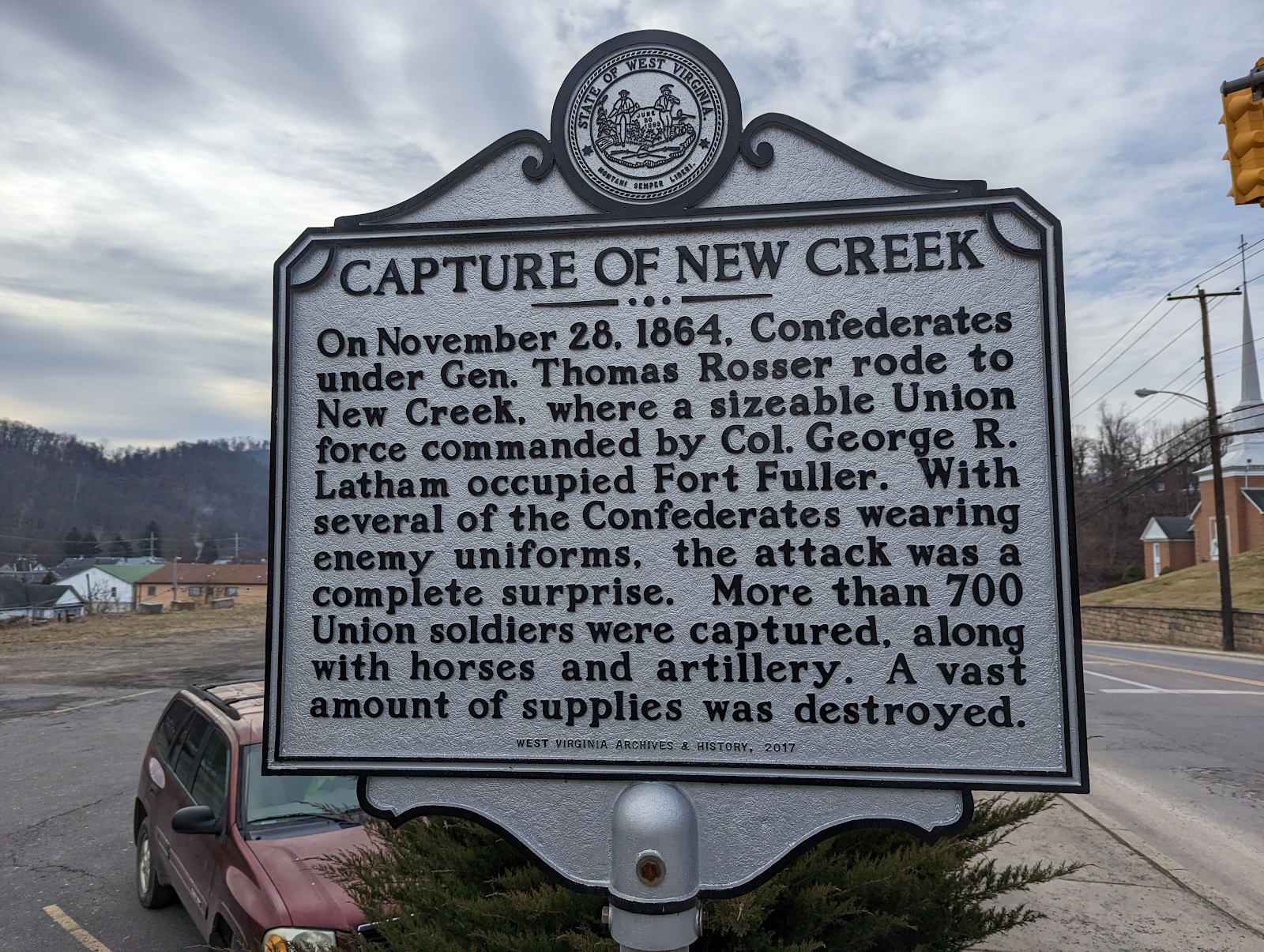June 28-29, 1863 - Battle of Wrightsville
June 28, 1865
The Battle of Wrightsville; or The burning of the Wrightsville bridge
Wrightsville, PA
Union militia under Maj. Granville O. Haller and Col. Jacob G Frick.
VS.
Confederate Generals Jubal A. Early and John B. Gordon
* Invading Confederate forces seek to cross the river to take Harrisburg
* PA Militia and some National Guard guys from New York try to hold them off, but ultimately (accidently) burn down the bridge behind themselves.
* The fire gets out of control and the rebels help save the town of Wrightsville from burning down.
* African-Americans are reported to work and fight hard, and the only causality is one of these free-blacks. They dug much of the defensive works defending Harrisburg.
* As the monument bellow indicates, this was THE farthest point east reached by the confederate forces. (Somewhere during this same campaign--Confederates before Gettysburg--is also the most Northern reach of the Civil War armies.)
 |
| Here can be seen both the modern bridge in the background and the remaining embankments of the bridge that burned. |
 |
| https://www.hmdb.org/m.asp?m=205659 |
Next, moving West and away from the bridge up the hill into the city we come to the home where Breakfast was offered the next day to Gen. Gordon. Again, the map on the sign shows the location of the bridge and the skirmishes leading towards it, including the hastily built forts and embankments to the West of town.
 |
| That's the house where Mary Jane Magee ("Heroine of the Susquehanna") made breakfast for Gen Gordon, to thank him for the Confederate assistance in putting out the fire the night before. But she boldly declared her allegiance to the Union. |
 |
| https://www.hmdb.org/m.asp?m=199208 |
 |
| https://www.hmdb.org/m.asp?m=168736 |
Further West into the city, this was the location of additional entrenchments. I had to park in someone's driveway to get to these two signs hidden in a residential part of Wrightsville. However, it was clearly the high ground, with a slope leading directly down into the river and the spot where the bridge once stood.
 |
| https://www.hmdb.org/m.asp?m=173061 |
And finally, furthest from the river though still higher in elevation, is the remarkably intact ruins of Fort Couch, which was built-up in anticipation of the rebel advance, though quickly abandoned by the green militia when they did. As the sign says, the main body of Confederates didn't even approach the fort. It was still very cool to see the preserved earthworks and recent memorials.
Some proof that I'm not just making this stuff up as I go along.
 |
| https://www.hmdb.org/m.asp?m=26526 |
 |
| The remains of Fort Couch are in amazingly good condition, but that's because the fort was never attacked. Guys from this fort set out for the Oyster Point and Sporting Hill battles - some of the Northernmost engagements of the whole war. |
 |
| https://www.hmdb.org/m.asp?m=216436 And the other side of the monument |
 |
| https://www.hmdb.org/m.asp?m=26525 |
* While the bridge itself has a Wikipedia entry, the battles does not. Nor does the American Battlefield Trust give it a whole page, though they did make a recent video about the bridge burning, which actually inspired me to go look for the bridge-burning spot in the first place!
This link is an excellent resource about the battle and the burning of the bridge, including maps and originals pictures. Here's how they tell the story with greater details:
"By late June 1863, the Confederate Army had invaded Pennsylvania. After capturing York, the Rebels planned to take the state capital, Harrisburg, and possibly Philadelphia. They would need to cross the Susquehanna River at Wrightsville to get there.
Pennsylvania militiamen from Columbia vowed to block the Confederate advance on the Lancaster County side of the river. Federal troops retreating from York joined them, as did a company of Black militiamen from Camp William Penn. In all, they mustered fewer than 1,500 men.
When Rebel Brigadier General John Brown Gordon arrived on June 28 with approximately 1,800 troops, the Union waited in their entrenchments.
The Confederate opened up with artillery fire, and the Union position rapidly became untenable. The Union decided to retreat to Columbia and blow up a section of the over-mile-long bridge behind them, denying the Rebels access to Lancaster. The explosion failed to destroy the bridge, so Colonel Jacob G. Frick gave the order to burn it.
Interestingly Confederate Generals Jubal A. Early and John B. Gordon had planned to save the bridge despite orders from General Robert E. Lee to burn it. Conversely, Union forces had initially hoped to defend and protect it.
As the Rebels surged forward, the bridge erupted in flames. Gordon’s men worked for hours to extinguish the blaze. They kept Wrightsville from going up in smoke, but the bridge, financed by the First National Bank of Columbia, was destroyed.
Gordon’s brigade was recalled to York the next day. The Pennsylvania militia had saved Lancaster and set the stage for the three-day Battle of Gettysburg that would soon begin on July 1.
Afterward, the Columbia Bank and Bridge Company appealed to the federal government for reimbursement for damages incurred from the bridge burning, but none were ever paid. Estimates put the cost of damages with interest at over $170 million.
In 1864, the bank sold all interest in the bridge and bridge piers to the Pennsylvania Railroad for $57,000.











Comments
Post a Comment